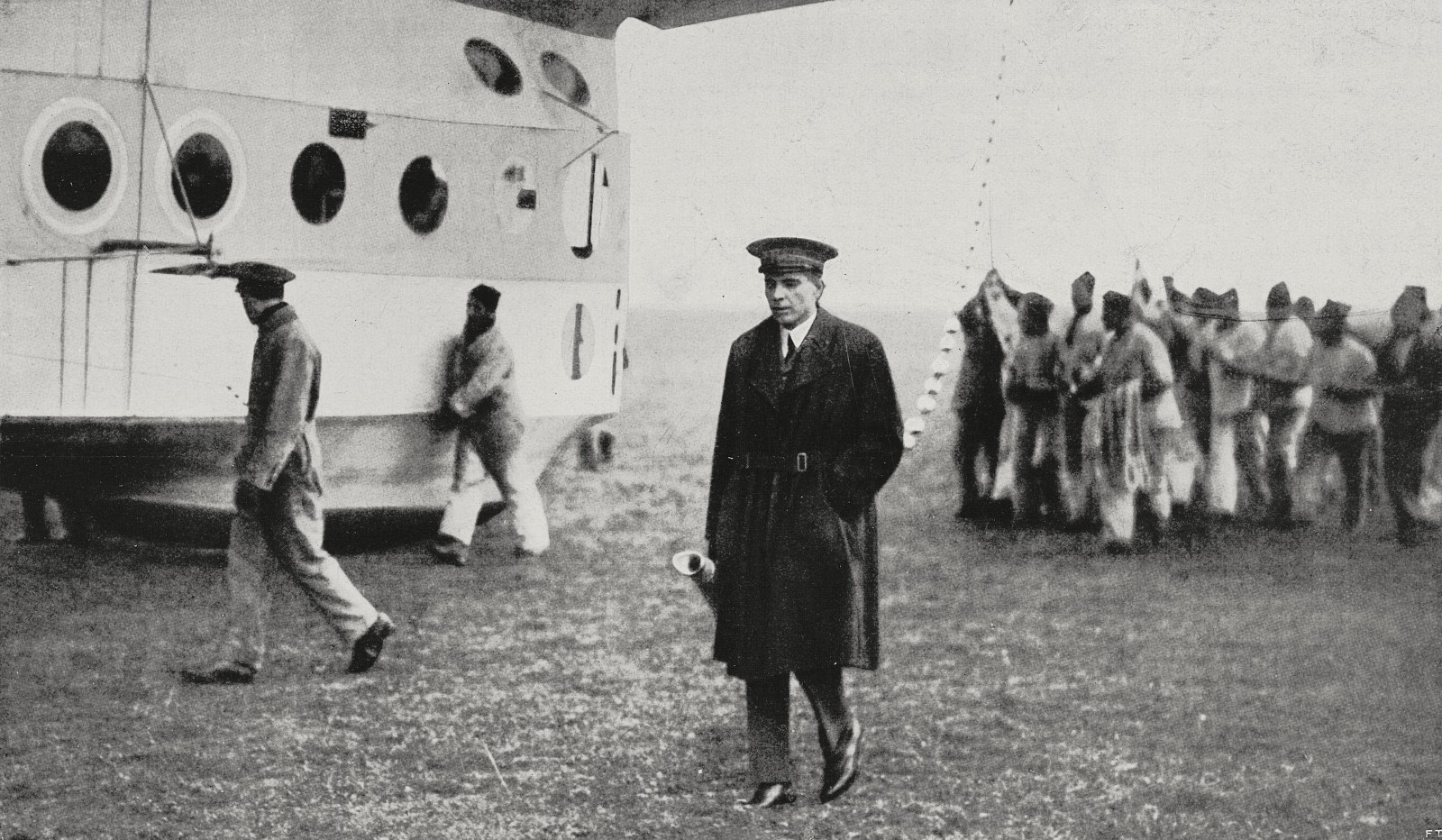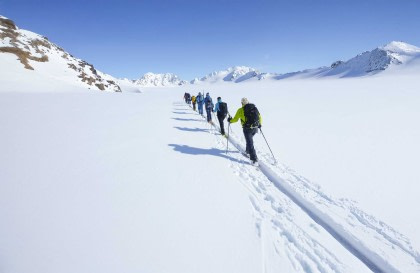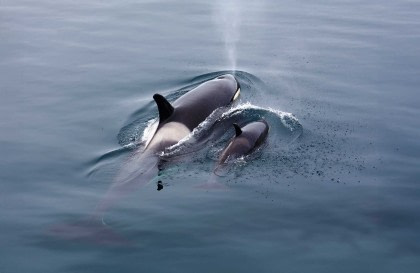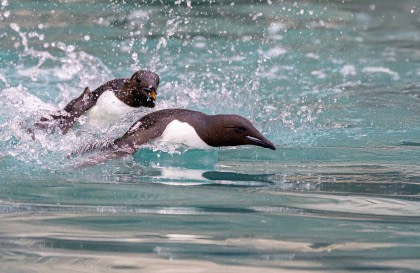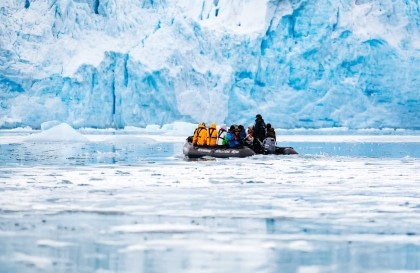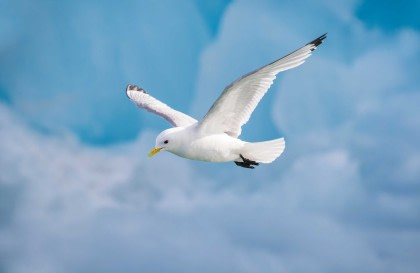Aboard the airship Italia, battered by swirling winds and wounded by chunks of ice forming on the propellors and tearing into the ship's envelope, her designer and pilot, Umberto Nobile, was startled out of a daze brought on by over two days without sleep. From behind him, the cry went up, “la ruota dell'ascensore si è bloccata! - the elevator wheel is stuck!" Immediately, the Italia dropped, nose first, toward the jagged ice below. Umberto cried out above the roar of the wind, his fogged brain switching into gear, "All engines stop!" The fate of the Italia and the 16 men aboard her hung by an ice-laden thread.
Reaching the North Pole by air
Two years previously, Nobile had successfully piloted another airship of his design to the North Pole, the Norge, completing the first trans-Arctic flight alongside the legendary polar explorer Roald Amundsen. The results of the Amunsden-Ellsworth 1926 Transpolar Flight had convinced Nobile of the viability of the airship - then widely used for international travel - to explore the Arctic wastes and the North Pole faster, more safely, and in more depth.
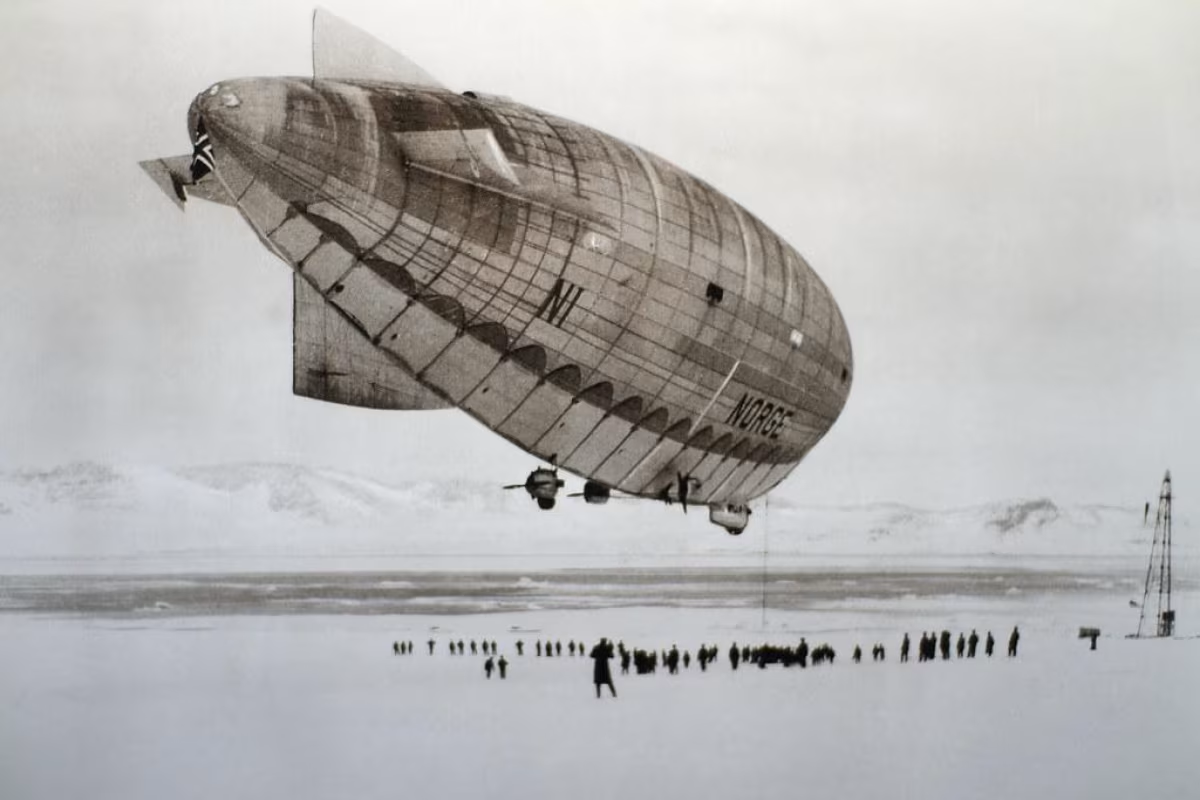
Airship Norge in the Arctic
On his return to Italy, Nobile gathered support for a second expedition by air, securing the Italia, used by the Italian Air Force, for a new scientific expedition to the North Pole on behalf of the Italian Geographical Society. Bolstered by the support of the Italian Royal Navy and funded by wealthy Milanese donors, Nobile was ready to return to the wastes of the North once more. Under no illusions to the difficulties and dangers ahead - the Norge expedition had not been without incident - Nobile was defiant in a speech given in Milan on the eve of the departure of Italia, "Had it been safe and easy, other people would have already preceded us."
By 6 May 1928, Italia reached the mooring mast at Ny-Ålesund, having encountered engine failures and strong winds on her flight from Finland. En route, the expedition's meteorologist Finn Malmgren dropped a letter to his mother as the airship passed low over his house in Stockholm. The expedition made two flights, the first on 11 May 1928, which encountered heavy ice, and a second on 15 May, during which the Italia reached the uncharted Nicholas II land, covering 4,000km and gathering valuable meteorological, magnetic, and geographic data. Spurred on by the success of the second flight, the crew prepared for their third fateful voyage, departing Ny-Ålesund in the early hours of 23 May, heading to the North Pole via the Greenland coast.
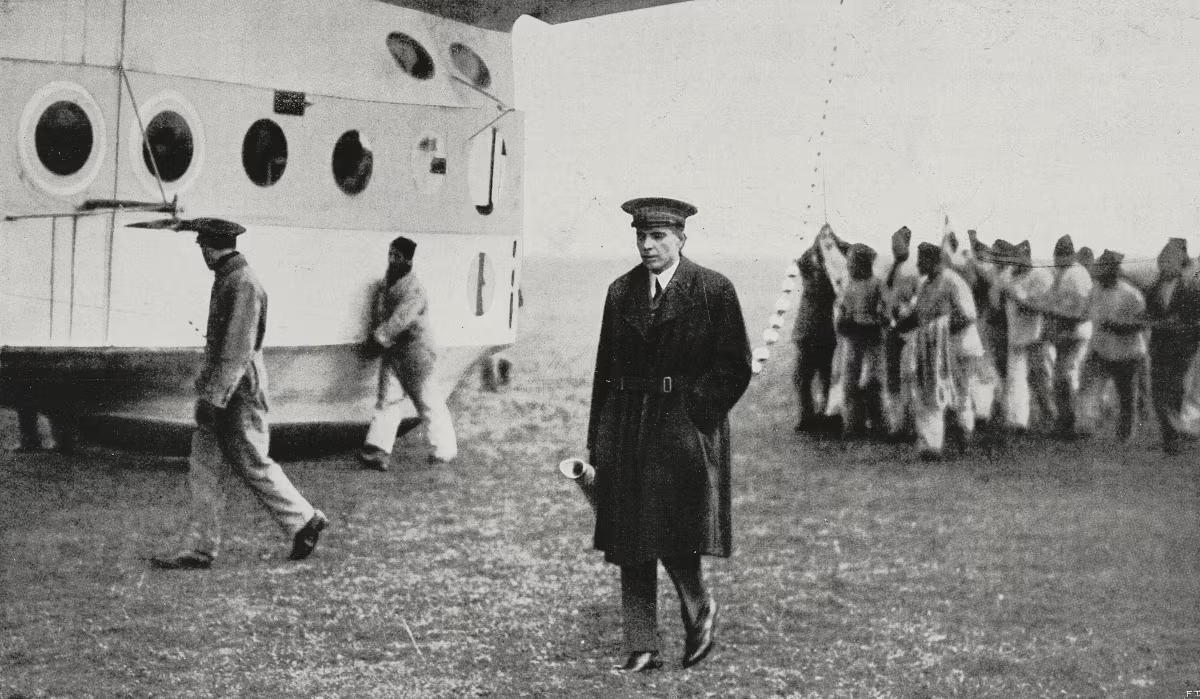
Umberto Nobile overseeing the moving of the Airship Italia. Photo by L'Illustrazione Italiana, Year LV, No 13, March 25, 1928.
A gathering storm
Nineteen hours later, the Italia successfully reached the North Pole, pushed by strong tailwinds. A ceremony was performed, with the Italian and Milanese flag, a medal from the citizens of Forlì, and a cross presented by Pope Pius XI dropped onto the ice below. A winch was prepared, and life rafts stocked with survival packs intended to drop scientists onto the pole; however, gathering winds proved too dangerous. These preparations would prove to be providential.
Deciding to return to King's Bay in the hope that the strong headwinds would lessen, the Italia departed the pole around an hour after arriving in the early hours of 24 May 1928. Twenty-four hours later, however, the airship was only halfway back to base, with increasing headwinds and a thick fog delaying progress significantly and eating ever more rapidly into their dwindling fuel supplies.
With propellors becoming choked with ice and holes being ripped into the envelope, the ship's elevator man, Natale Cecioni, struggled to maintain control while variations in its course began to show in compass readings and bearing. By the morning of 25 May, the situation was critical. Expedition wireless operator Giuseppe Biagi sent a signal stating that if he did not answer, there was good reason. By now, Nobile had been awake for over 48 hours, fuel was low, and the death of the Italia was imminent.
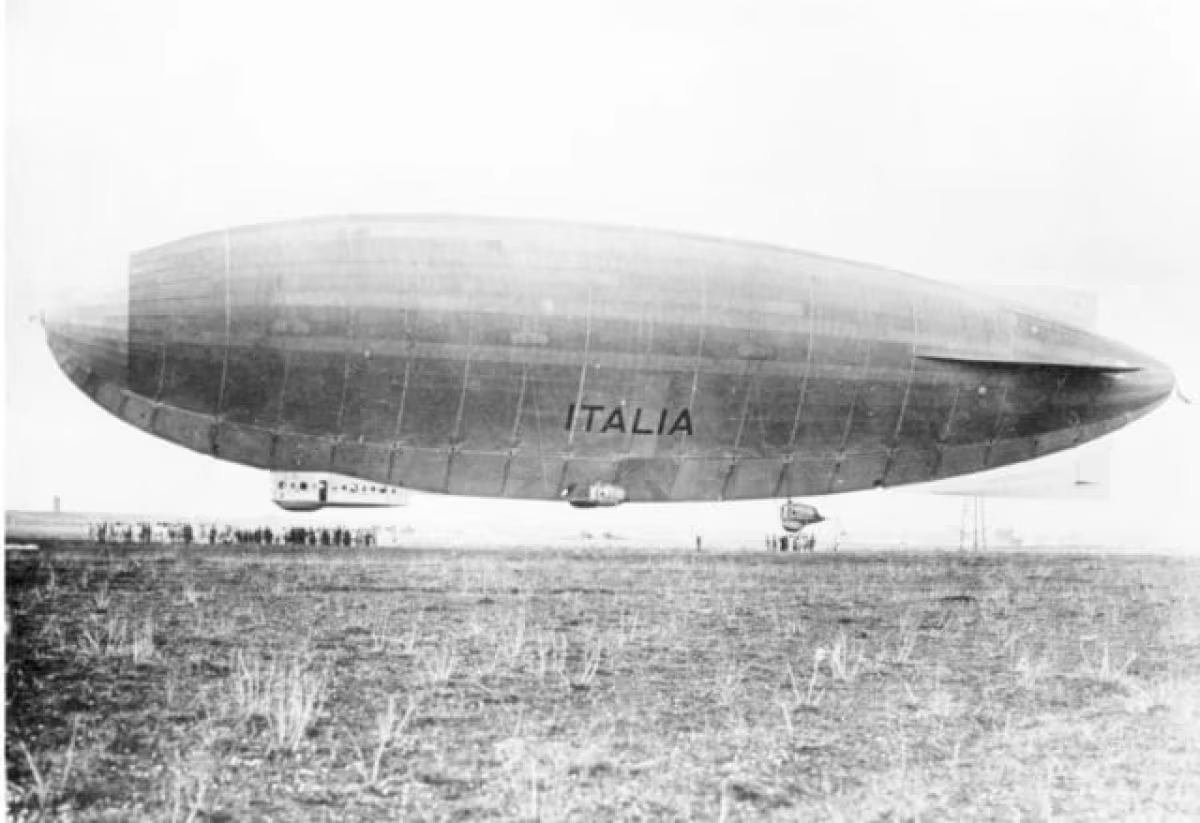
Airship Italia
The loss of the Italia
"Each man went about his work in silence," wrote Nobile following his rescue. "The vivacity and cheerfulness that had accompanied our outward journey had now disappeared." At 9:25 am, the elevator wheel jammed, and the Italia plunged towards the ice. "Stop the engines!" Nobile had cried, an order which initially saved the airship, which, just 300 feet from the ice, began to rise with the wind.
At 3,000 feet, the Italia broke into clear sunshine - a brief respite - before two engines were restarted, and she descended to 1,000 feet without incident. All appeared well, but by 10:30, Italia began to drop at 2 feet per second, being tail-heavy and unresponsive. Emergency power was called for, but a crash was unavoidable.
Nobile ordered the power cut to prevent a fire on impact and called for the ballast chain to be dropped - a move which had worked to slow a landing aboard the Norge - however, the steep angle of the cabin made it impossible for Natale Cecioni to reach it in time. Seconds later, the control car smashed into the ice and was ripped from the keel. With the weight of the gondola now gone, the envelope immediately began to rise, taking six crew members with it as it drifted into oblivion.
Out on the unforgiving pack ice
Hurled from the cabin and onto the ice, Cecioni gazed in horror up at the drifting envelope, seeing Calisto Ciocca, Aldo Pontremoli, Attilio Caratti, Renato Alessandrini, Ettore Arduino, and Ugo Lago gazing back in startled terror from the torn opening of the envelope as it drifted up and away from the men below. In a remarkable move, Arduino began throwing supplies onto the ice as he drifted away, saving the lives of those not trapped in the envelope.
On the ice, the survivors gathered themselves. Vincenzo Pomella had been killed in the crash, and several others, including Nobile, were seriously injured. Cecioni had two broken legs, Malmgren, a fractured shoulder and internal injuries, and Nobile, a head wound, a broken leg, an arm, and a fractured rib. The group had 300 grams of food per day and hastily gathered supplies scattered across the ice pack, huddling into a hurriedly constructed tent. None had proper Arctic survival clothing.
By late May, Malmgren, Filippo Zappi, and Adalberto Mariano set off toward land to find help. Biagi, who had salvaged his radio, made repeated scattered transmissions for help, picked up in fragmented transmissions by the support ship Città di Milano and an amateur Soviet radio operator, sparking an international rescue effort that would grow to include 18 ships, 21 planes, and over 1,500 rescuers.
Rescue on the ice & further fatalities
Denmark, Finland, France, Italy, Norway, Sweden, the United States, and the Soviet Union launched rescue missions, sending ships, planes, and foot expeditions to try and reach the stranded men. Biagi was able to transmit their coordination by 9 June, and by 20 June, supplies were being dropped by air to the men on the ice.
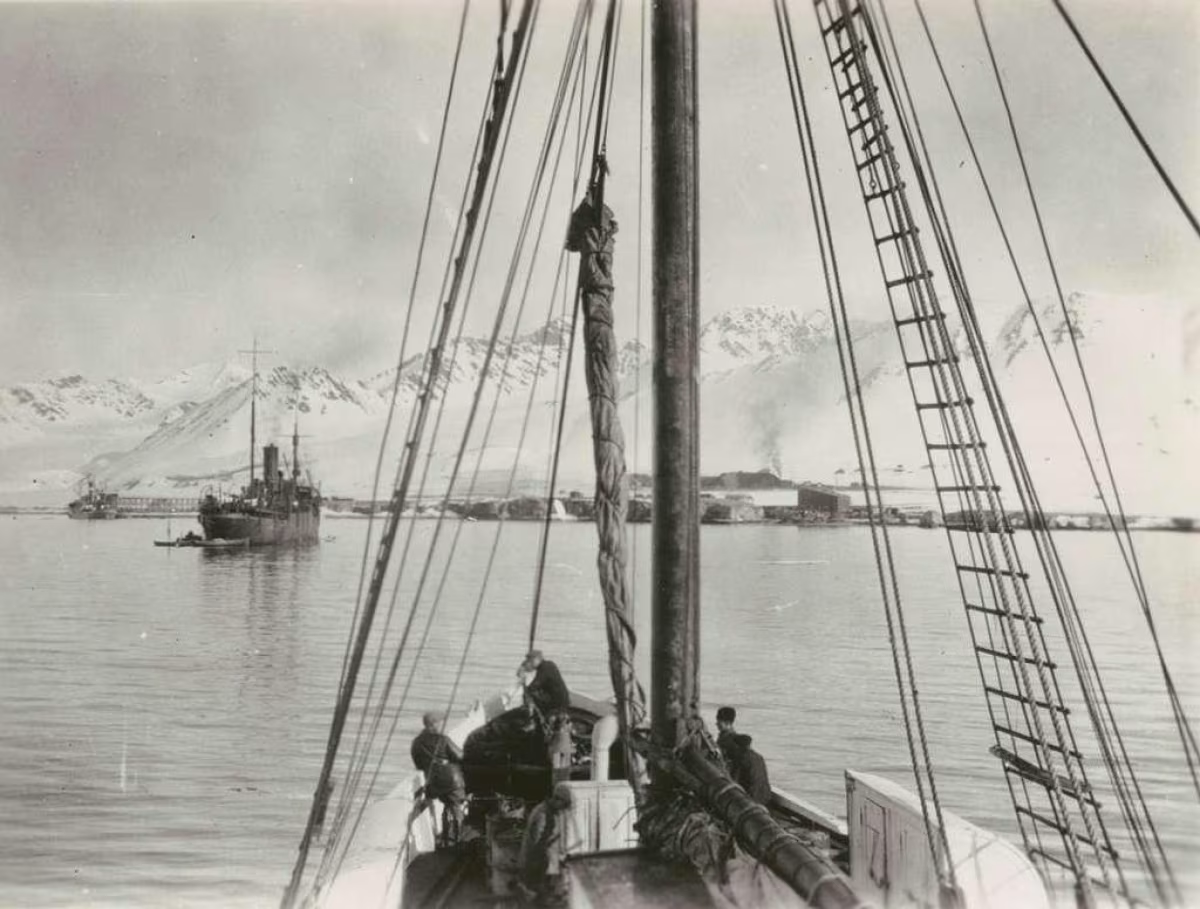
Swedish rescue ship Quest arriving at King's Bay
As Soviet icebreakers attempted to push through, Italian Alpini troops labored overland, and Swedish and Norwegian pilots tried to rescue the men by air; famed polar explorer Roald Amundsen, answering the call to rescue his friend and colleague, vanished en route to Svalbard along with five others. On the ice, the Swedish pilot Einar Lundborg landed and rescued Nobile on 23 June, but upon returning for other survivors, he crashed and became stranded. Elsewhere, Soviet explorer Boris Chukhnovsky becomes stranded alongside four others after spotting the walking party of Malmgren, Zappi, and Mariano.
It would not be until 12 July that the remaining survivors, including Nobile's dog, Titiana, were rescued by the Soviet icebreaker Krasin. Zappi and Mariano were also rescued after being found on the ice; however, Finn Malmgren wasn't with them. He died from exhaustion weeks earlier. Krasin also picked up Chukhnovsky and his men, while a fellow Swedish pilot, in turn, rescued Lundborg.
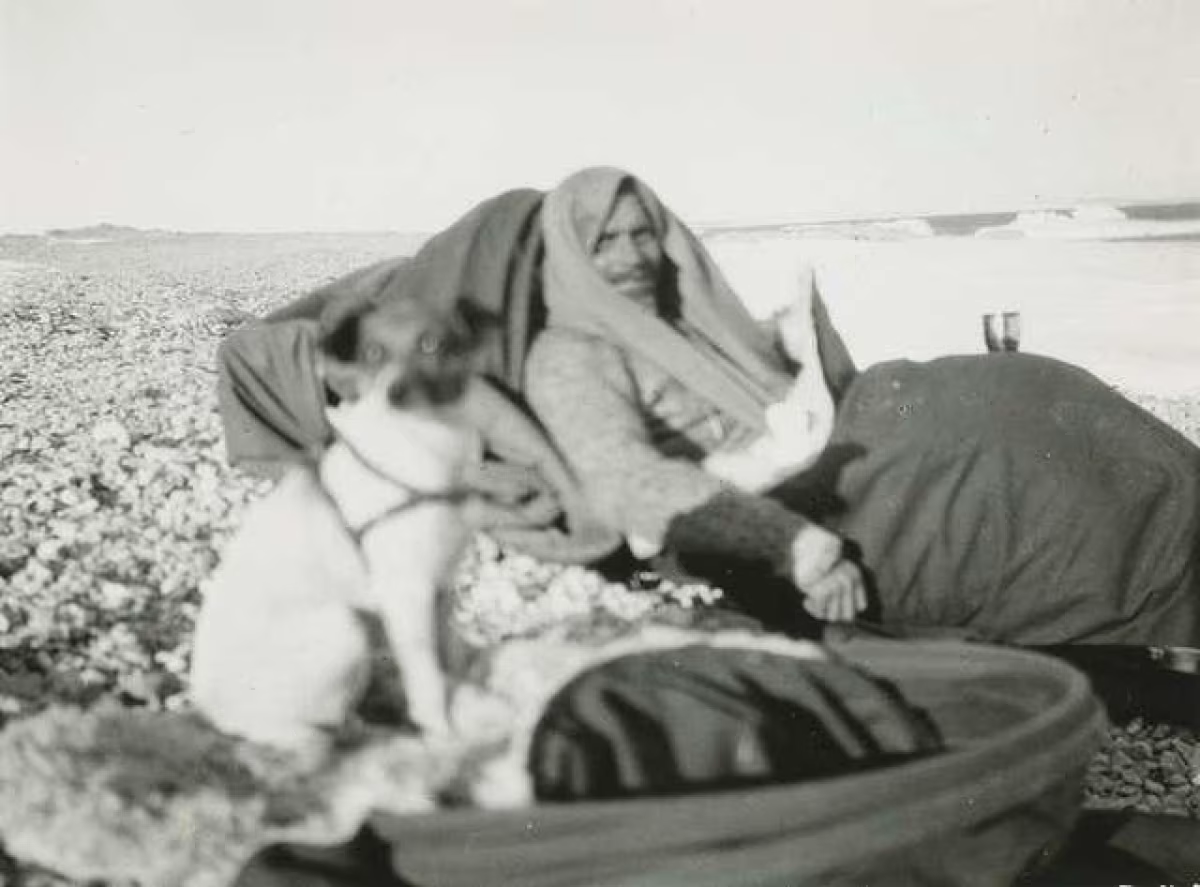
Umberto Nobile and his dog after the rescue expedition in 1928
A national hero mourned, a reputation tarnished
In total, over 48 days elapsed between the crash of Italia and the rescue of the survivors on 12 July. Of the 16 men aboard, six were lost with the envelope - Ciocca, Caratti, Alessandrini, Arduino, Lago, and Pontremoli - one was killed in the crash, Pomella, while Malmgren, died while attempting to summon help. Nine would-be rescuers perished, including Amundsen, while several others were themselves stranded during the search, complicating an already disorganized and disjointed approach.
The cause of the crash remains controversial. Perhaps ruptured gas valves were the cause or expanding hydrogen due to Italia climbing above the clouds. It could have been unseen damage to the envelope or a combination of human error, fatigue, and the challenging conditions brought by a fierce Arctic storm.
A total of 17 men died because of the crash of the Italia and subsequent rescue efforts. The envelope and the six men aboard it have never been found. Umberto Nobile was both reviled and praised for his actions during the crash, and in Italy, his polar, military, and professional reputation was lost until the overthrow of Benito Mussolini during the Second World War.
In Norway, losing Amundsen, a national hero, was cruel. A man who had achieved everything had been killed whilst attempting to save a man who, viewed by many, was foolishly trying to overachieve, dooming his men to death and despair in the unforgiving pack ice of the Arctic.
